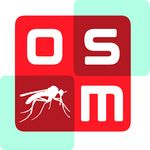OpenSourceMalaria:Triazolopyrazine Series Mechanism of Action: Difference between revisions
| Line 17: | Line 17: | ||
==The Frontrunners== | ==The Frontrunners== | ||
*note this section is linked to a GitHub Issue [ | *note this section is linked to a GitHub Issue [https://github.com/OpenSourceMalaria/OSM_To_Do_List/issues/400 #400] and will be systematically edited to incorporate input from online discussion. | ||
The following actives (MMV670246 is poorly active but included for comparison) have been identified as the "frontrunners" for further exploration by OSM. All but one of these compounds were found to be active in a whole cell assay, but only one has been tested in Kiaran Kirk's ion regulation assay. | The following actives (MMV670246 is poorly active but included for comparison) have been identified as the "frontrunners" for further exploration by OSM. All but one of these compounds were found to be active in a whole cell assay, but only one has been tested in Kiaran Kirk's ion regulation assay. | ||
Revision as of 21:34, 7 June 2016
Open Source Malaria Series 4 and the ATP4 Ion Channel
About
Some series four compounds have been found to inhibit the PfATP4 ion channel in an assay performed by Kiaran Kirk's lab at Australian National University. This page will be regularly edited to update OSM's understanding of this activity with both series four compounds and other antimalarials currently being pursued by other research groups.
A brief history of ATP4 and malaria
PfATP4
PfATP4 is the apparent target of a number of different chemotypes: Kirk Review
The Frontrunners
- note this section is linked to a GitHub Issue #400 and will be systematically edited to incorporate input from online discussion.
The following actives (MMV670246 is poorly active but included for comparison) have been identified as the "frontrunners" for further exploration by OSM. All but one of these compounds were found to be active in a whole cell assay, but only one has been tested in Kiaran Kirk's ion regulation assay.
A large range of data has been measured for the compounds and this is captured below in a condensed form of the master chemical list, which is colour coded to assist when glancing over the data (key: green = good, yellow = OK and red = poor).
In order to further probe the MoA of the series four compounds it is necessary to send these compounds for testing by the Kirk group at ANU. For example, three of the compounds have been tested in vivo and are able to kill the parasite in mice, but the MoA is still to be tested. We would also like to fill in the gaps in the data where possible as this will help when rationalising compound design and also for assembly of the S4 paper.
The active compounds are mainly ethers along with a few amides and one amine:
Ethers MMV663915 highly active, still to be tested in ion regulation assay. MMV670936 active with good cytotox and hERG profile, still to be tested in ion regulation assay. MMV639565 highly active in whole cell and in vivo, still to be tested in ion regulation assay.
Chiral ethers of particular interest owing to activity and the ability to explore/compare both enantiomers for each compound: MMV669844 highly active in whole cell and in vivo, still to be tested in ion regulation assay. Problematic hERG profile. MMV672687 good activity and cLogP but no further data yet. MMV688896 good activity and cLogP but no further data yet. MMV670652 highly activity, some clearance data but need to gather more. MMV670437 highly active, cLogP on target and basic amine centre is of interest for further exploration.
Amides MMV670246 was found to be a weakly hit in the ion regulation assay and to possess low activity in the whole cell assay. Hence, further data should be collected. MMV670767 is an amide with good whole cell activity but we should collect more data. MMV670944 is an active amide with lots of data - ion regulation data is required in order to produce a complete profile for the paper.
Amine MMV669848 active in the Kirk assay and has shown other promising properties, more exploration required.
Resynthesis is required in order to provide adequate quantities of the compounds for testing.
New Compounds
We have shipped 12 compounds for potency evaluation and are awaiting data before folding the compounds into this issue.
However, one existing compound MMV670947 has shown good activity and either this or the newly synthesised MMV693155 should be sent for testing.
[[Image:
 ]]
We also need to look at some inactive/weakly active compounds and examine them in the Kirk assay and collect other data (hERG, Cytotox, clearance etc.). Some suggestions are:
]]
We also need to look at some inactive/weakly active compounds and examine them in the Kirk assay and collect other data (hERG, Cytotox, clearance etc.). Some suggestions are:
Pyridine ethers MMV688895 - this compound should be re-tested in whole cell to confirm a lower potency than MMV670936 and also tested in the Kirk assay. pyridine ethers
Amides MMV675947 and MMV675946 are moderately active amides that would serve as good controls in Kirk assay. MMV675718 is an inactive amide that should be included as a negative control in Kirk assay.
